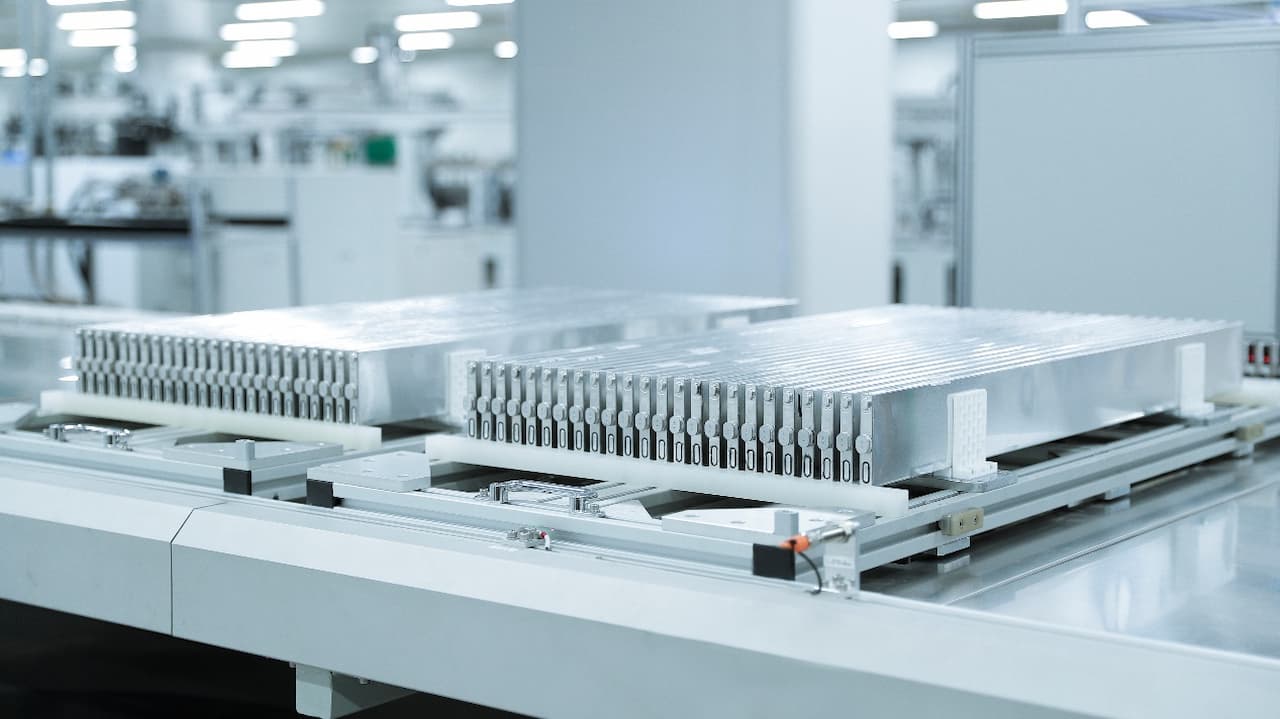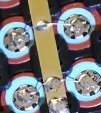Here, virtually everyone is working with the rectangular prismatic cells from varied suppliers providing them. More often than not they are NOT properly Matched or Batched, which means they will collectively perform identically, IE: Same IR @ 3.000 & 3.100 & 3.200 etc. In EV Land like Tesla, their cells are perfectly matched and each cell is actually fused as well... Apples to Grapefruit !
Only a FEW Vendors can supply properly Matched/Batched Prismatics and they do cost more. IF Paralleling cells they cannot be mix-n-match, hope for the best, but the results will never be what is desired. Even if you took 200AH Cells and paralleled them in a pack to come up with a 400AH Pack, you would still be limited to 200A Output & 100A Charge.
Given the nature of cells available from assorted vendors and people squeezing their wallets we generally do not recommend paralleling cells, within a battery pack. Flip of the coin risk with minimal benefit.
Paralleling Battery Packs, builds in redundancy & backup because if 1 Pack fails for any reason the others continue to operate without issue. Technically there is little limit on how many Packs can be put in parallel. A Battery Pack of course being the Cells & BMS for those cells. I run 5 Packs in Parallel and there are a few here running even more in multiple racks of battery packs.
Do remember that when Paralleling Packs they will divide all Discharge & Charge between themselves. The bigger the Battery Bank is the more complicated it is to charge because you always have to keep in mind the Lowest Common Denominator which is the "Single Pack" with the lowest AH Capacity. As above, if you have 6x 200AH Packs in parallel for 1200AH you are still limited to a MAX of 100A Charge to a pack, which translates to 16A per pack for charging.
Steve, glad you joined this thread. I have read a metric TON of your posts in the last 2 years or so. Part of what put me off the prismatic cells is what you have to say about them. I dont feel confident that I can get REAL EV grade prismatic cells - too many stories of people not getting what they thought they were getting. Of course some of this is on the buyer - you get what you pay for so if you think you are getting the best cells for a song - well the many experiences regaled here tell the story on that approach. I dont mind paying for quality EV cells but where to get a REAL GENUINE NEW FRESH EV prismatic cell? I have seen it written many times - China is a crap shoot!
Then there is the argument about not using prismatic cells on a boat. This article
https://nordkyndesign.com/assembling-a-lithium-iron-phosphate-marine-house-bank/ very clearly states that the author was given what he considers trustworthy advice from a manufacturer - I quote
"A sales manager at Sinopoly I was talking to was adamant about using 100Ah or 200Ah cells only for assembling marine battery banks, with 100Ah being preferred and 200Ah acceptable. Large cells simply don’t have the structural strength-to-weight ratio required to be taken to sea on board small crafts and would exhibit shortened life due to internal mechanical damage arising from on-going vessel motion. It is common sense: as a cell becomes larger, its internal weight increases much faster than the rigidity and surface area of the casing and the casing is all what holds the plates together in a prismatic cell.
Failures have been reported on vessels equipped with 700Ah cells following ocean passages: some cells were suddenly found to be losing charge inexplicably, rendering the battery bank completely unmanageable and the matter ended in a complete write-off. All big-brand commercial marine lithium battery packs on the market today are built from cells no larger than 200Ah."
So for a boat it seems to be safe, if using prismatic cells, to stick with 100Ah or smaller cells. Cylindrical cells may be even better in this respect. The cylindrical cells I have mentioned are from the factory direct - no resellers involved. The cells are Gushen GODSEND 22Ah 3.2v LiFePo4 cells. I came across them in a car audio face book group I am in and they say these cells are very very good (experienced admin who runs the group and who by all accounts is reliable). I contacted the factory direct and they will sell direct - at great pricing to boot. Just today they contacted me to say they are about to start production of another batch of these cells if I want to place an order with them. So brand new fresh cells rated at 5C discharge - catch is only 22Ah per cell and that means either a lot of batteries or a good number of parallel cells in a battery to get the capacity I need. I am targeting around 50kWh x 2 - that is I want to build out 2 battery systems - each with thier own BMS and inverter. Out here we live by the saying "2 is 1 and 1 is none". 50kWh hours gives me the range i need on the electric propulsion and leaves about 15 kWh for the house duties - before needing to recharge.
Your statement .....
"Paralleling Battery Packs, builds in redundancy & backup because if 1 Pack fails for any reason the others continue to operate without issue"
would depend on the BMS chosen. I was looking at Battrium - a lot. I need to build a distributed battery bank to balance out the weight in the boat. Battrium is good for this but, at least to me, has the undesirable action of dropping the WHOLE battery bank if there is a critical fault in one of the parallel battery packs in the battery bank. This defeats your preferred action of having redundancy if 1 pack fails - with Battrium the whoe BANK is taken off line. The ony way around this is to build out 2 battery banks - i think.
I am still reading on the approach of a JK BMS on every paralleled battery - not quite sure how that all works out just yet. Lots of reading to do on this.
It seems I am missing something quite important here - or under a false belief anyway...... I dont quite get this part that you wrote....
"Even if you took 200AH Cells and paralleled them in a pack to come up with a 400AH Pack, you would still be limited to 200A Output & 100A Charge."
I, for some reason was under the belief that if you took a 3.2v 22Ah 5C discharge /0.5c Charge cell and paralleled that cell with another 3.2v 22Ah 5C discharge / 0.5C cell that you ended up with a 3.2v 44Ah 5C discharge /0.5C charge cell pair - meaning that you can now discharge a 44Ah cell at 5C and charge a 44Ah cell pair at 0.5C.
To put this in a clearer way : a 22Ah cell 5C discharge cell could be discharged at 110amps and the 0.5C charge rate for that 22Ah cell was 11amps. Now if that cell was paralleled with another cell of the exact same type then you would have a 44Ah cell pair that can be discharged at 5C - ie, 5C of the 44Ah pair meaning it can be discharged at 220amps and charged at 0.5C of 44Ah - ie, charged at 22amps.
Seems I have this very wrong. Can you please clarify this point to make sure it is clear for those of us who must have been sleeping in class when this bit of the lesson was given.






